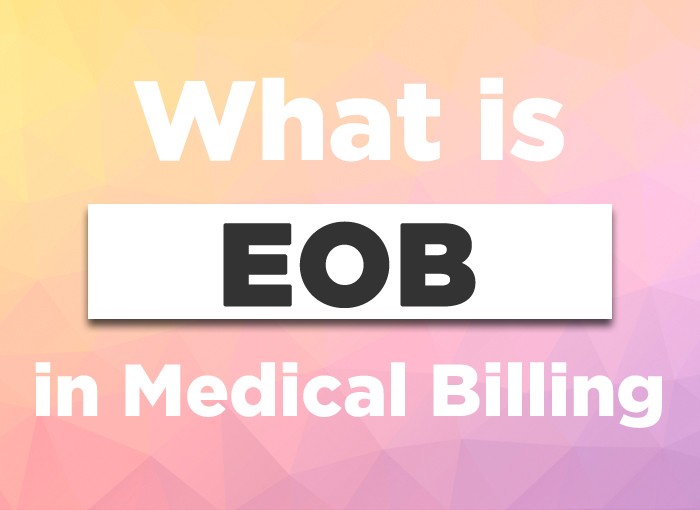What does EOB stand for in Medical Billing
Patients are provided with an EOB statement along with the final bill or patient bill. This statement is sometimes confused with the final bill itself due to the remaining balance/patient balance mentioned on it. However, this statement is not a bill but an explanation of benefits as provided by the hospital and insurance payer to the patient
Definition of EOB
In medical billing, the term EOB stands for Explanation of Benefits—a statement that is usually generated to give an insight into the medical benefits covered by the patient’s insurance payer. The aim is to update the patient about claims submitted, the amount paid by the insurance payer and the amount owed by the patient.
Purpose of EOB Statement
Typically, an EOB statement has the date of service, procedure/service name, procedure code, amount claimed, discount, totally covered, co-pay, policy deductible, and patient balance listed on it. The purpose of the explanation is to tell the patient how the claim was processed. The EOB statement is one way to ensure that the insurance payer has already covered the patient’s medical benefits as per the patient’s health care insurance plan. Each health care insurance plan comes with different medical benefits for different procedures. Therefore, it is imperative for the insurance payer to explain the covered benefits to avoid any confusion.
Role of EOB in Medical Billing
The health care medical billing system is quite complicated especially when it comes to insured patients. With thousands of insured patients visiting hospitals every day, it is important to keep track of the covered benefits for each patient depending on the insurance plan he/she has opted for. This helps in preventing any unfavorable event that may harm both hospital and insurance company’s finances. The following are the reasons explaining the role of EOB in medical billing.
- Assured Insurance Benefits: With all the benefits mentioned on the EOB statement you may verify the benefit(s) that were not paid by the insurance payer as per the health care insurance plan. This also helps in marinating transparency in the claim submission process.
- No More Overpaying/Underpaying Medical Bills: Mentioning the explanation of benefits helps in preventing up-coding/under-coding fraud by generating the correct bill for the procedures that the patient has received. In case of any discrepancy, in the final bill and EOB, the patient can question both the hospital and insurance payer. In other words, the patient has to pay the actual amount that he/she owes to the hospital, nothing more nothing less.
- Revenue Cycle Management: EOB also works in favor of the health care industry by maintaining the revenue cycle. Once the patient has received the EOB along with the final then he/she is required to cross-check the covered benefits and report the discrepancy. In the case of no discrepancy, the patient is obligated to pay the due amount. This is vital in preventing any financial loss by ensuring that the health care provider gets paid for his/her medical services without any failure.
In a manner, the EOB statement in medical billing is very also important in getting full reimbursement and preventing insurance denial or fraud.




